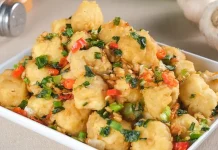What is Wine? What’s all the fuss about? How many of us have asked this question, albeit in our minds
Here is some basic wine facts
Wine is generally understood to mean the fermented juice of grapes, although a wine can be made from the fermented juice of the other plants too. Wine is a truly ‘natural food’ as it is will develop on its own wherever sweet plant juices are allowed to collect and ferment.
But man, the interfering creature that he is, has learned to help the process along through Viticulture – the science of growing and harvesting grapes and Viniculture – art of making wine. What he has developed is not one simple beverage, but a entire array ranging form the downright simple to the incredibly complex.
It helps most to know that all wines fall into few basic categories-appetizer and dessert wines, red and white table wines and sparkling wines.
When you have to make that all-important decision about which wine to buy/order, consider the use you’ll make of it. Do you need something to have with appetizers before dinner or is the need of the hour a wine to toast a newly wed couple. In the first case select an appetizer wine, in the latter a sparkling wine.
Appetizer & Dessert Wines
Sometimes these two categories are grouped separately, but since there are no many similarities between these two classes it is simpler to consider them a single class. Appetizer and Dessert wines usually have a higher alcoholic content and a more pronounced flavour than other wines. In some cases the same wine can be sipped as an appetizer or as a post prandial beverage. The difference is in the ‘dryness’ of the wine. ‘Dry’ versions (with the absence of sweetness) are served as an aperitif and sweeter forms as dessert. The exception here is Vermouth, which is popular in both its sweet and dry forms during the before dinner hour. Since wine rules are flexible there is nothing wrong in even pouring some of the wine meant for the main course to sip prior to the meal. For everyday meals this is a popular practice.
Dessert wines, like desserts themselves should be sweet and ‘full bodied’. In addition to sweet ( or ‘cream’) sherry there are several other distinct types, including Red port, Tawny port, Sauterness, Sweet semillion and wines made from the ‘musact’ grape.
And then there is the Chateau d’ Yquem, the worlds greatest sweet white wine.
Table Wines
To be part of this category, a wine must be compatible with other flavours. In contrast to the aggressive flavours of dessert wines, table wines are good harnonisers. They are also dry, with the alcohol, percentage hovering at approximately 12.5 %. Red, whites and Rose’s are a part of this category.
Sparkling Wines
Champagnes are part of this elite category. The effervescence of a sparkling wine is brought about by secondary fermentation that takes place in the bottle ( or in closed containers – in the case of regional and mass produced sparkling wines). Their alcoholic strength like still table wines averages at 12.5 %
In France, Champagne can only be produced in the legally defined region called ‘Champagne’. In other countries, including our own the name is attached to a white sparkling wine by virtue of the production process used in the making of these wines, what is called the ‘method champenoise’






